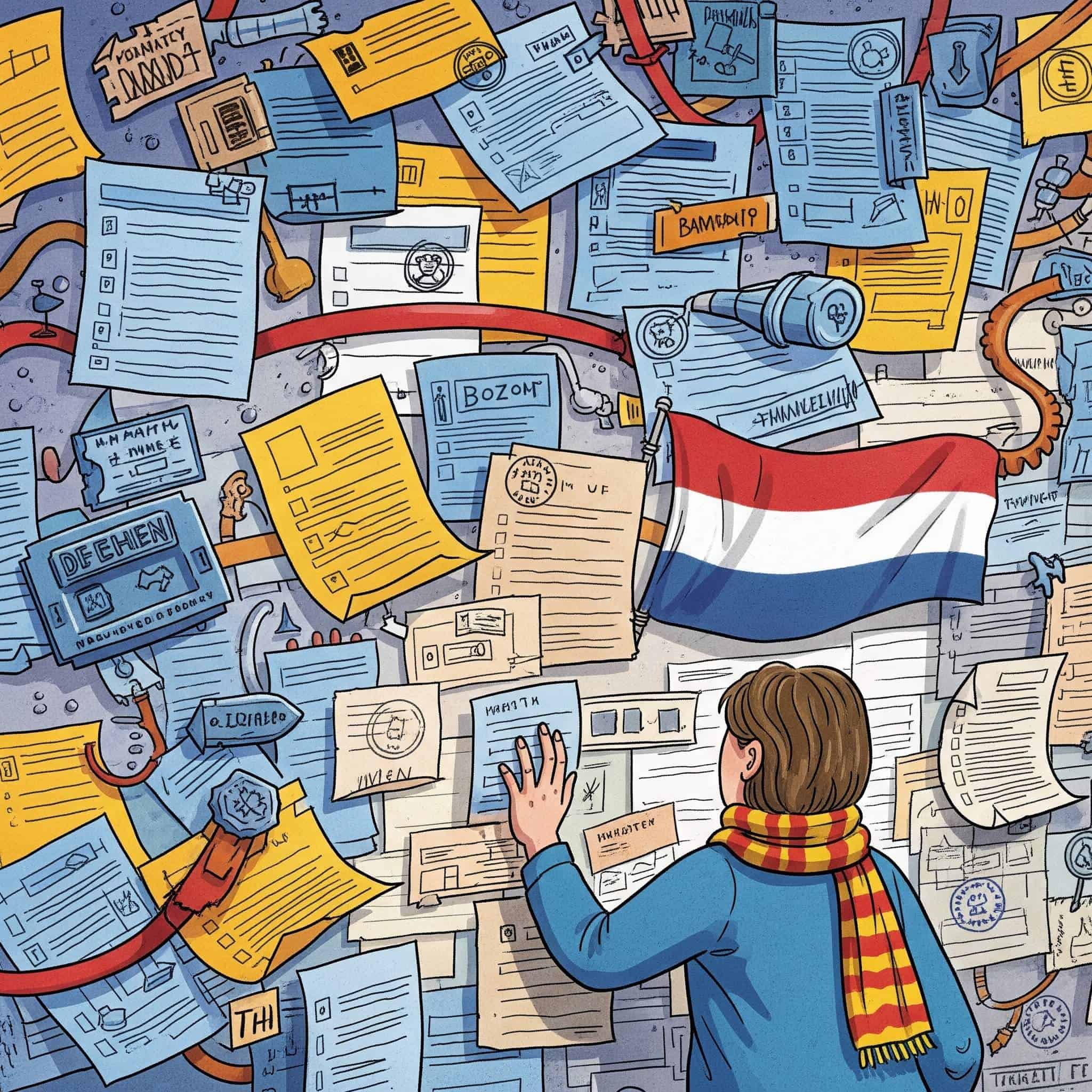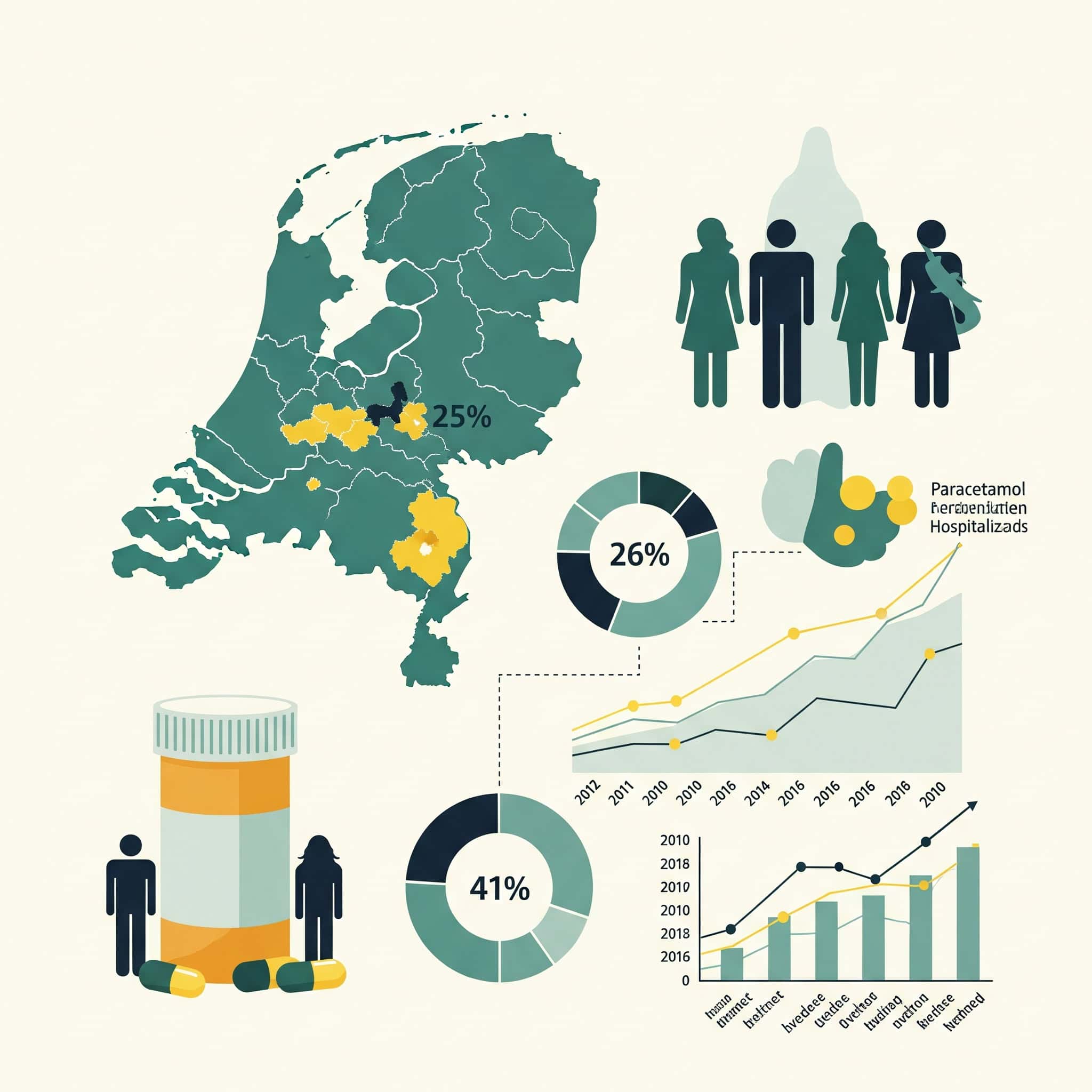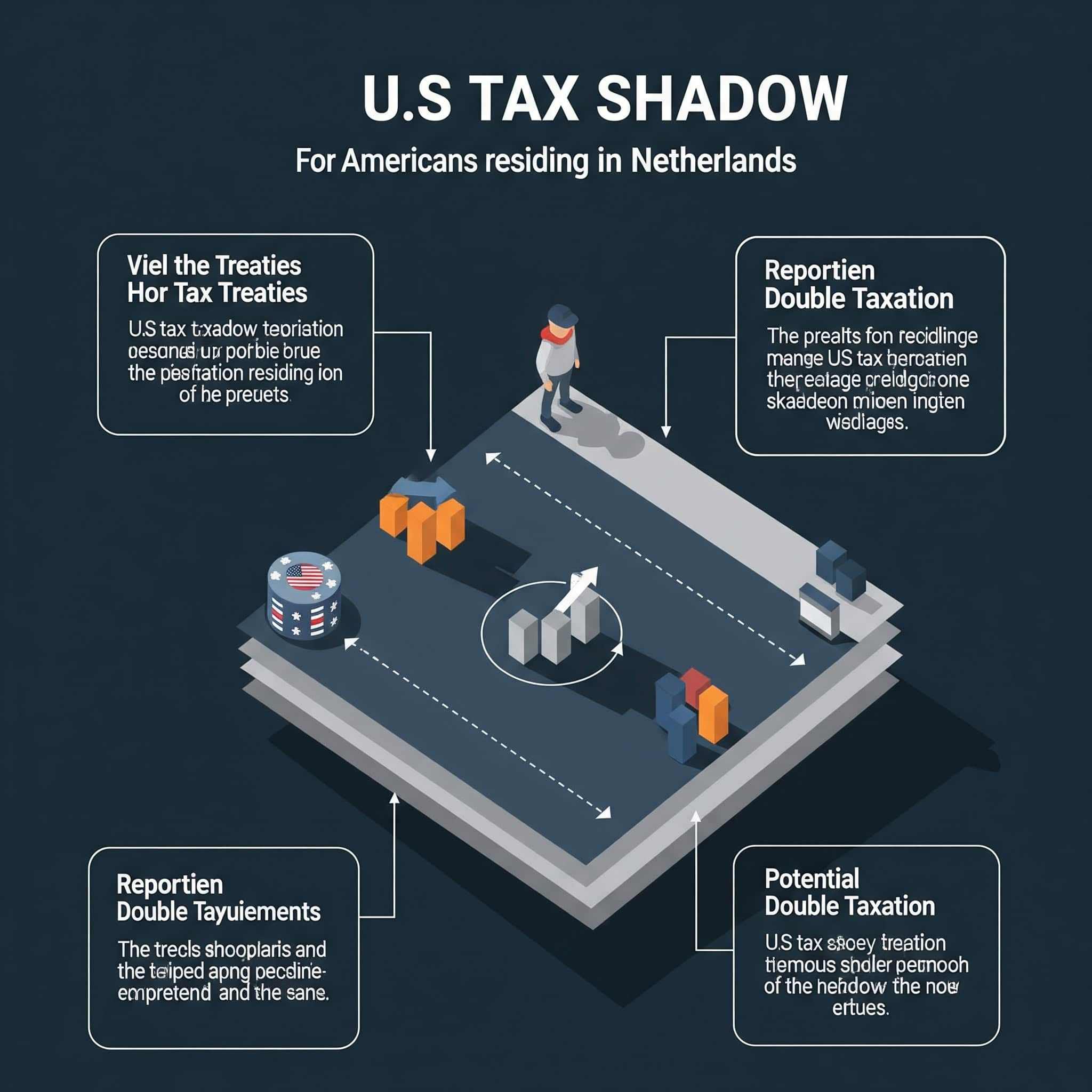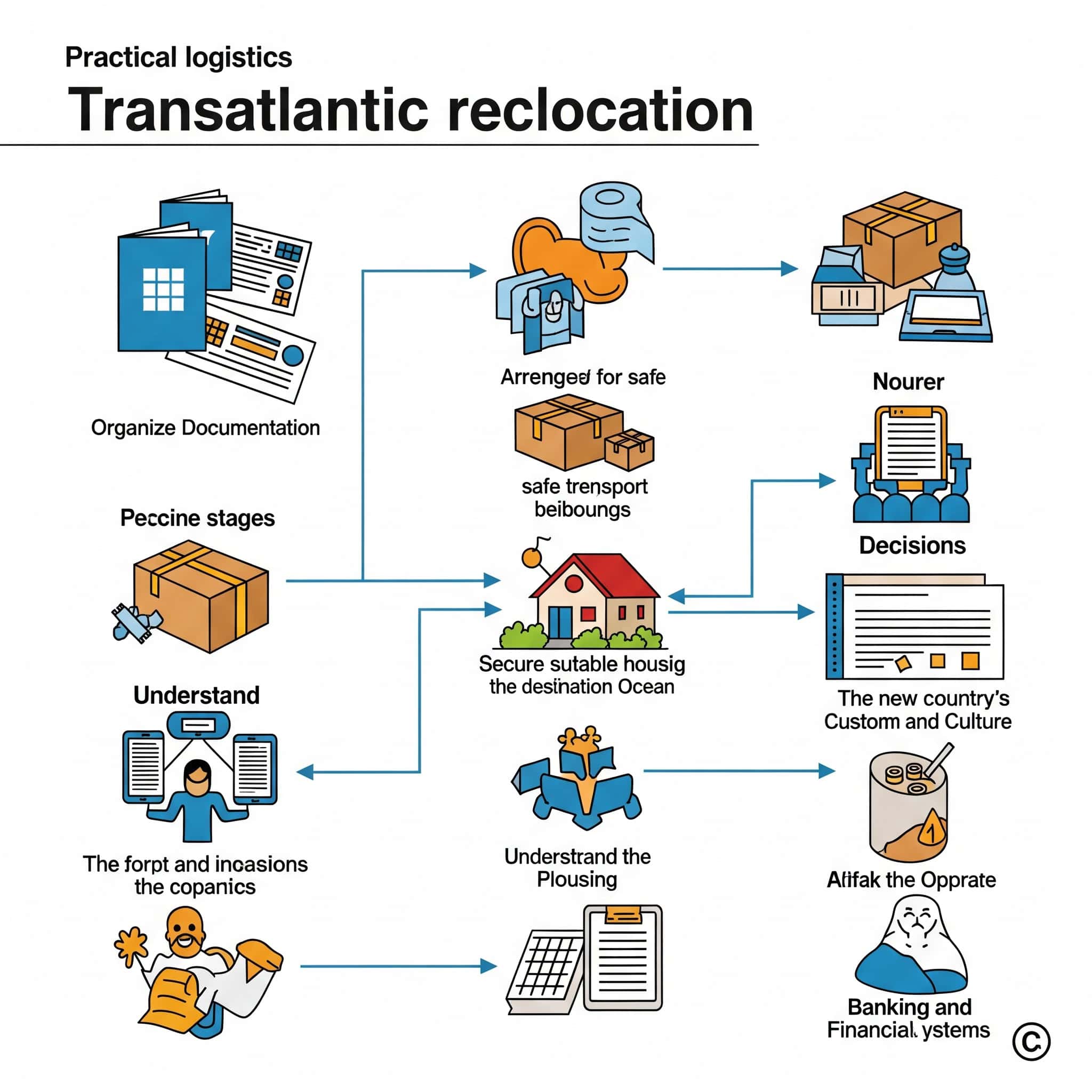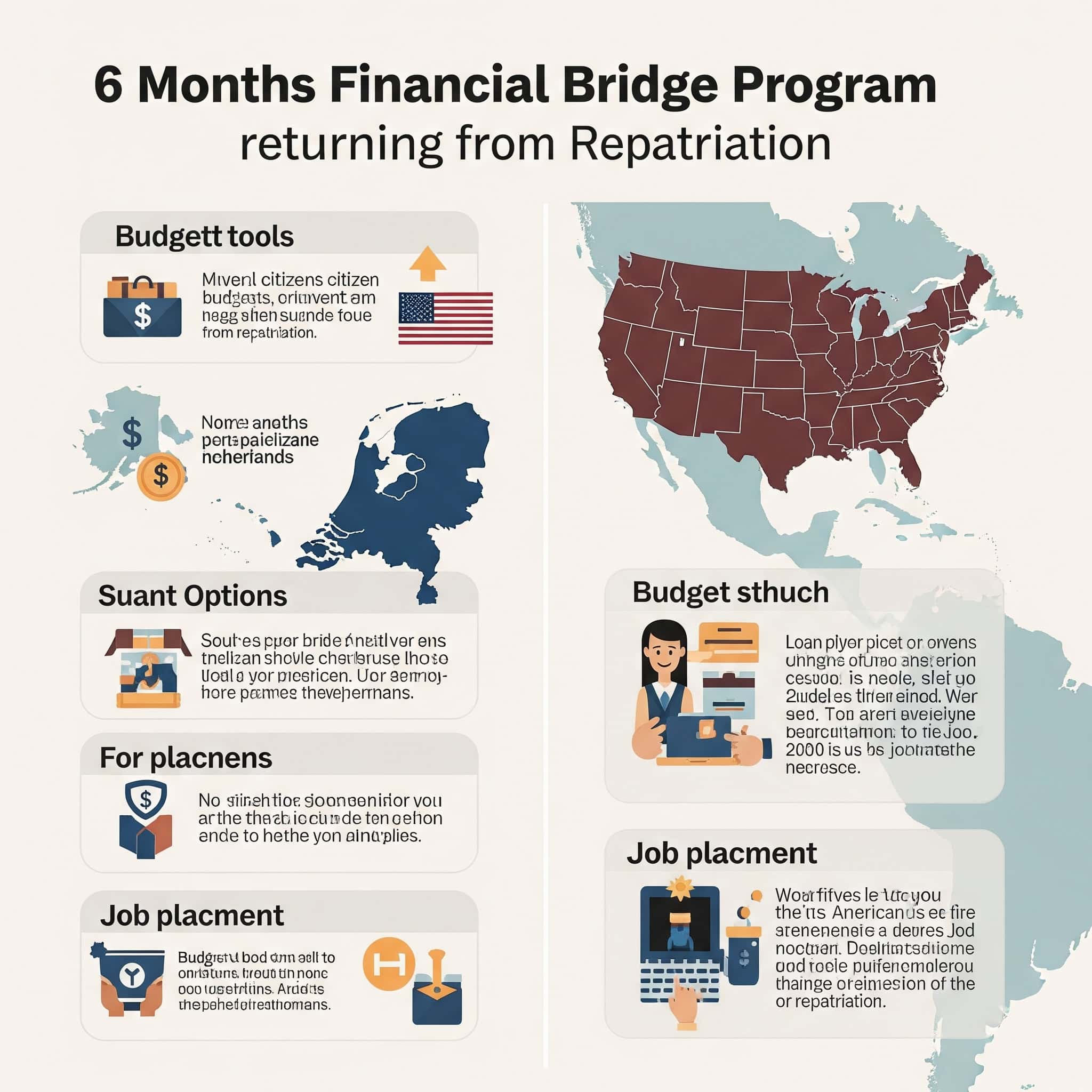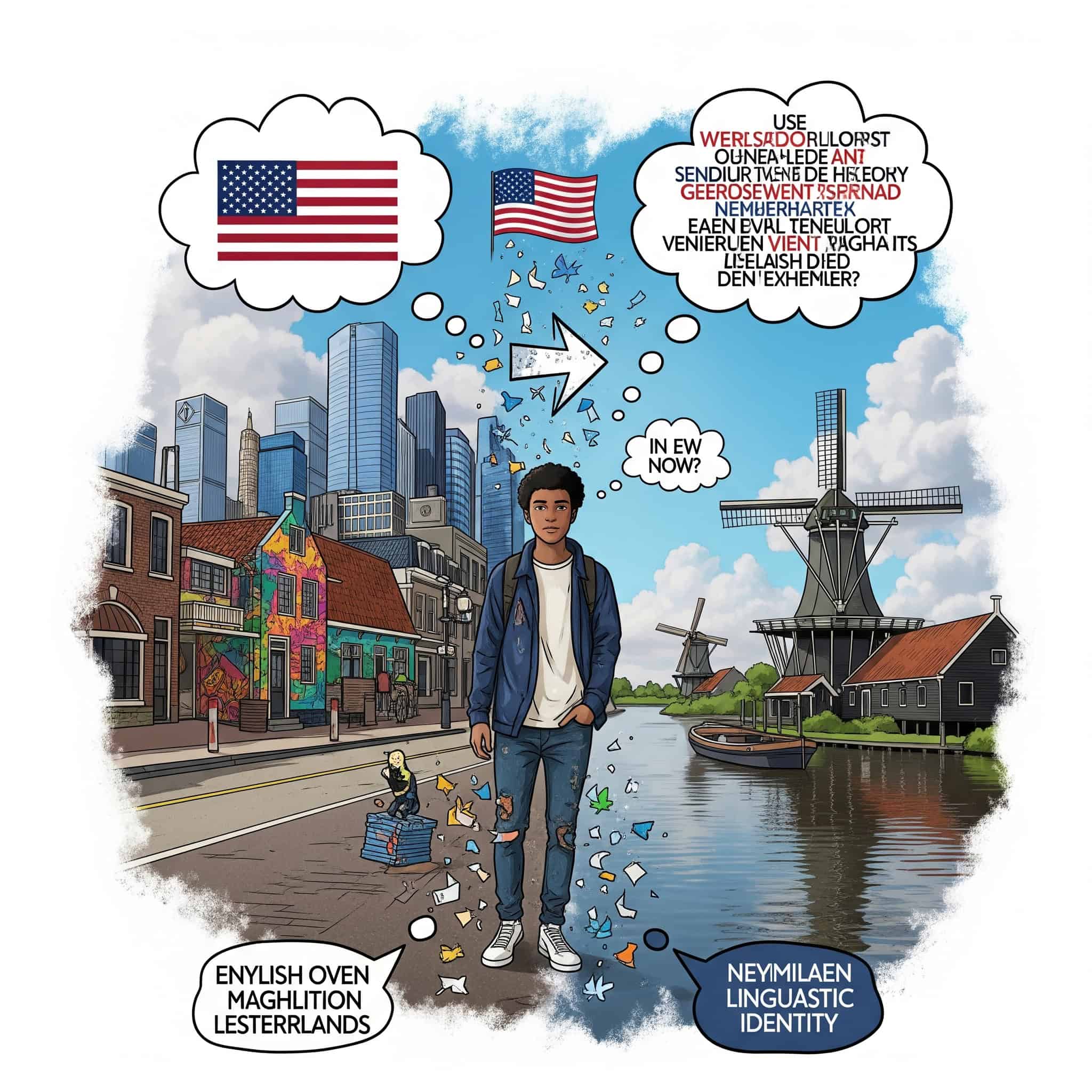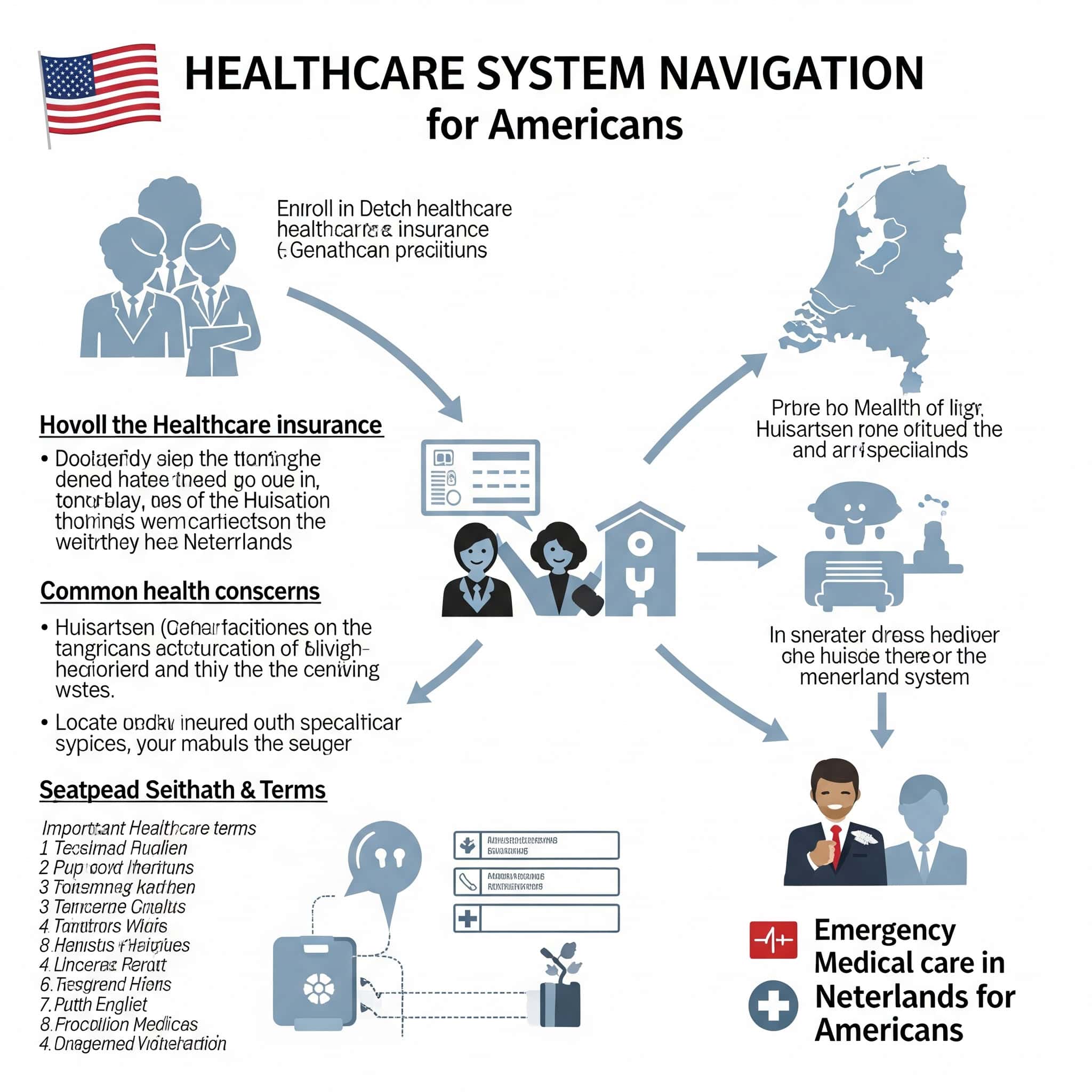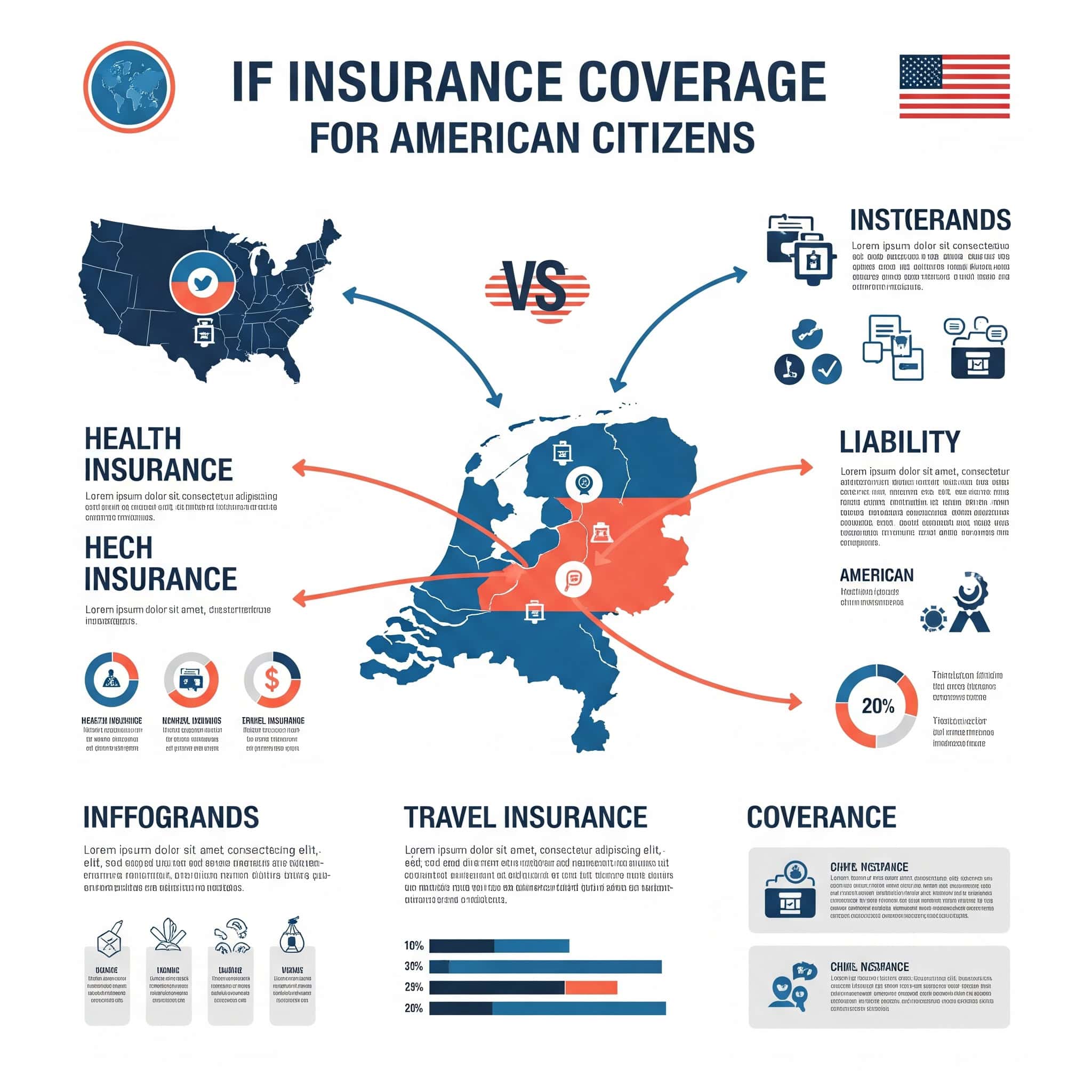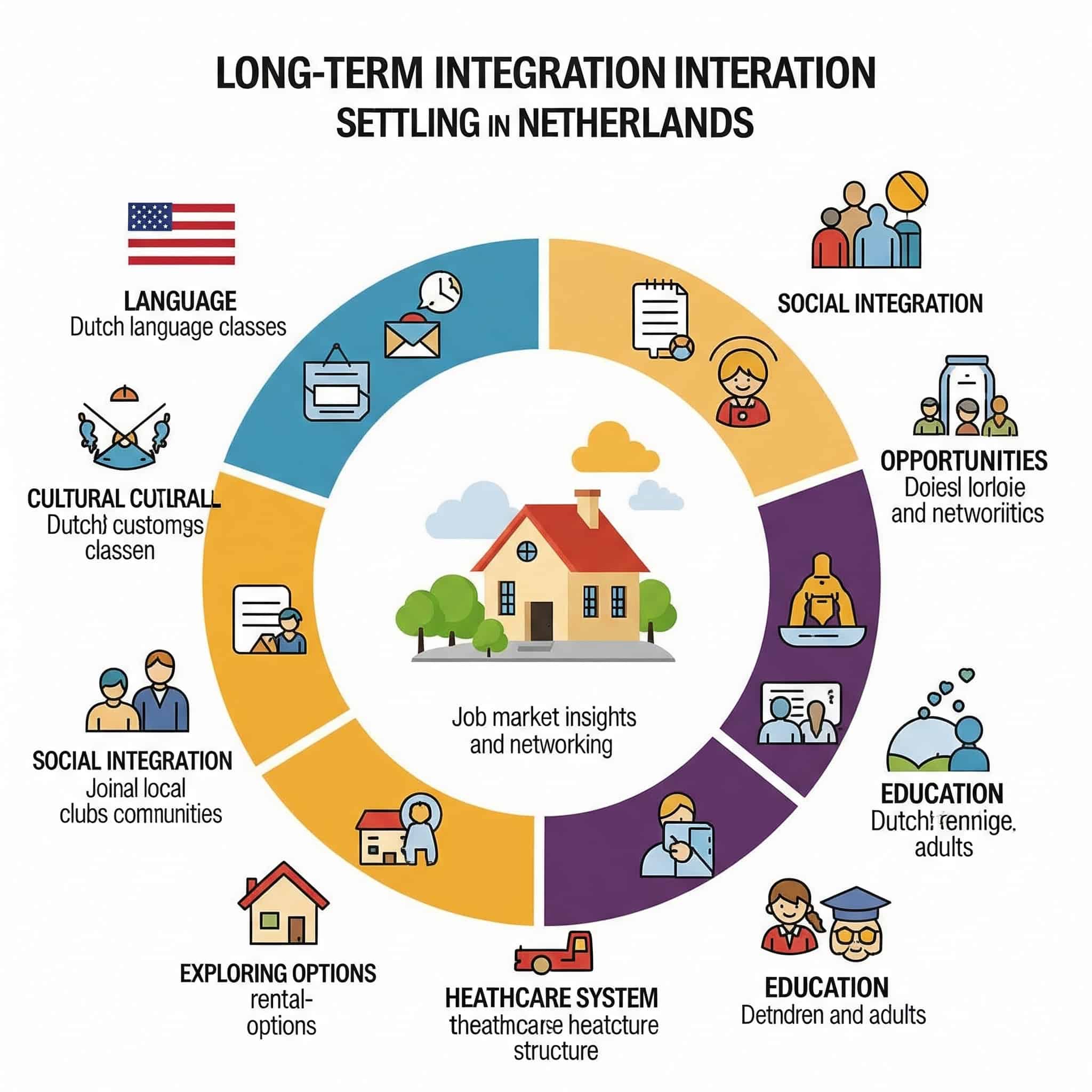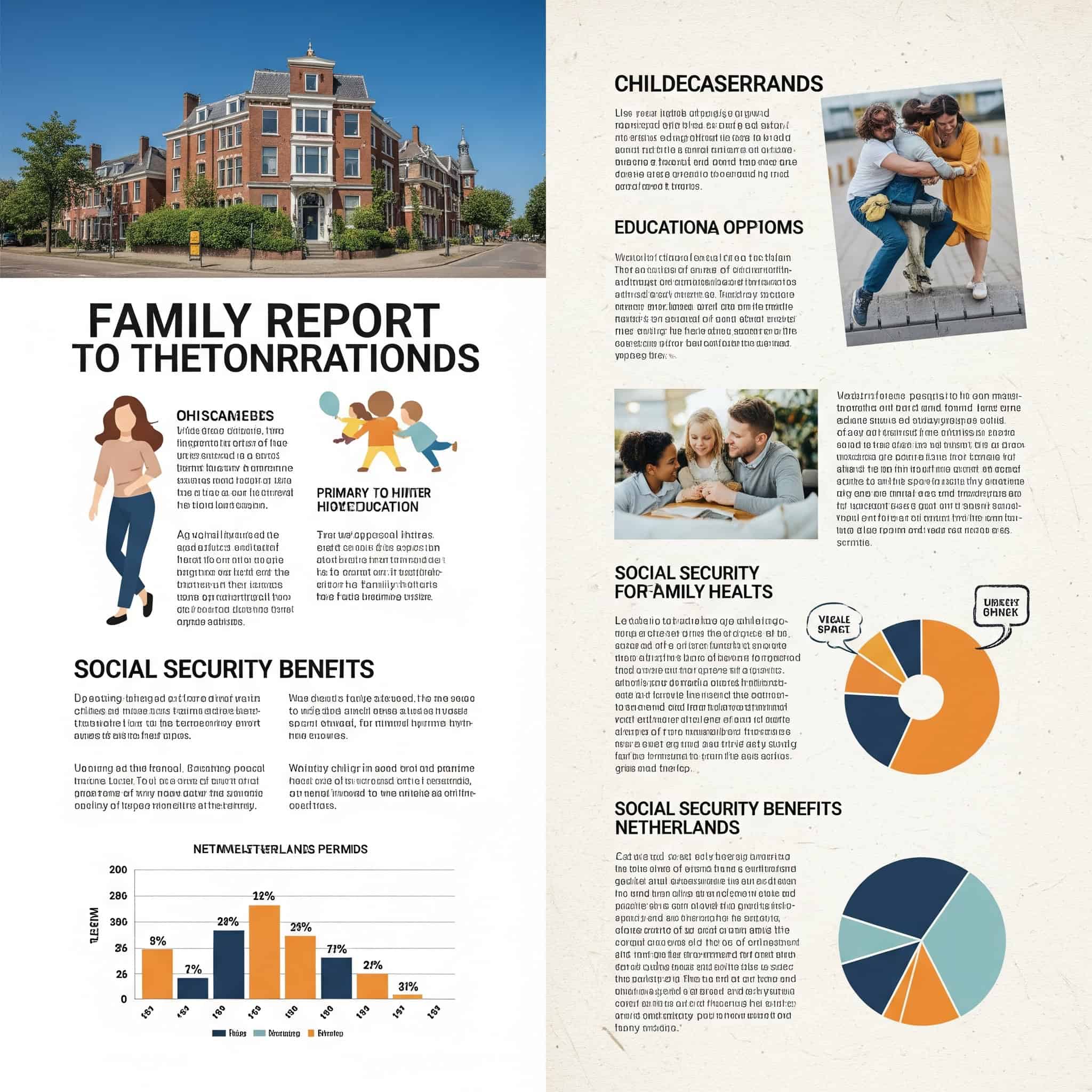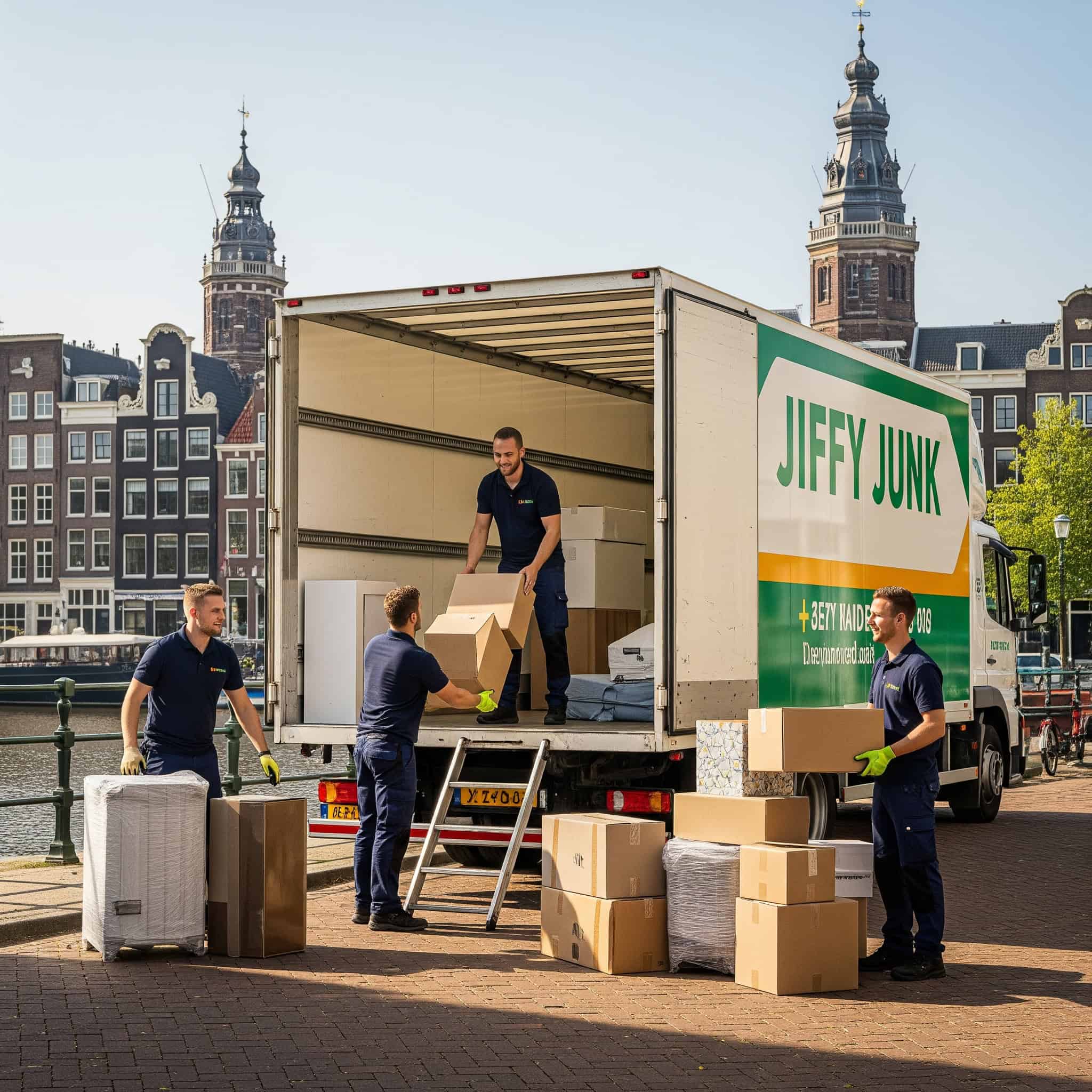Moving to Netherlands from US: The Hidden Realities No One Tells You About
Moving from the United States to the Netherlands involves far more than just packing boxes and filing paperwork. This comprehensive guide explores the psychological, bureaucratic, social, and practical aspects of relocating to Dutch society. We’ll examine the unseen challenges Americans face when adapting to Dutch directness, work-life balance, healthcare approaches, and social integration. Whether you’re planning your move or already settling in, this guide provides concrete strategies to navigate your transition successfully.
About 30,000 Americans currently live in the Netherlands, with numbers growing by roughly 8% each year as more US citizens seek international work opportunities and better quality of life.
Most Americans need 12-18 months to fully adjust to Dutch cultural norms. The toughest adaptation challenges typically hit between months 3-6 after arrival – right when the initial excitement wears off.
According to Statistics Netherlands (CBS), a total of 336,000 immigrants arrived in the Netherlands in 2023, with net migration (immigration minus emigration) at a positive 224,000 people. While this represents a decrease from 2022, the Netherlands continues to maintain a strong positive migration balance.
Table of Contents
The Psychological Transition
Bureaucratic Navigation Beyond the Basics
Social Integration Beyond Language
Practical Logistics of Transatlantic Relocation
Language and Communication Challenges
Healthcare System Navigation
Financial Adaptation Strategies
Long-term Integration Considerations
The Psychological Transition
Moving to the Netherlands involves significant mental and emotional adjustments that many Americans underestimate. You’ll experience a profound identity shift as you adapt to Dutch cultural values and communication styles.
Psychological adaptation happens in distinct phases: the honeymoon (1-3 months) when everything seems exciting and new, the crisis phase (3-6 months) when frustrations peak, recovery (6-12 months) as you develop coping strategies, and finally adjustment (12+ months) when you begin to feel at home.
Studies show that expats who receive pre-departure cultural training experience 60% less severe culture shock symptoms than those who don’t prepare psychologically. I wish I’d known this before my move to the Netherlands!
If you’re planning to move to the Netherlands, invest time in mental preparation alongside your logistical planning. Your emotional resilience will be tested in ways you can’t anticipate.
Cultural Identity Recalibration
Americans often face unexpected culture shock in the Netherlands despite its seemingly familiar Western European setting. The surface similarities mask fundamental differences in social values and communication norms that require conscious adaptation.
Cultural adaptation involves four key components: knowledge acquisition, skill development, attitudinal adjustment, and behavioral modification. You can’t just read about Dutch culture – you need to actively practice new behaviors until they become natural.
Research indicates that cultural adaptation follows a U-curve pattern with initial excitement, followed by frustration, gradual adaptation, and eventual integration. Understanding this pattern helps normalize the difficult middle period when many Americans consider giving up.
Hofstede’s cultural dimensions reveal fascinating differences between our countries. The Netherlands scores significantly higher on individualism (80) than the US (91), but much lower on masculinity (14 vs. 62), indicating vastly different approaches to achievement and success.
Just like when organizing your home before a big move, preparing mentally for cultural transitions requires sorting through your expectations. Our guide on decluttering strategies can help you apply similar principles to your mental preparation when moving to the Netherlands.
Cultural Dimension | Netherlands | United States | Key Implications |
|---|---|---|---|
Individualism | 80 | 91 | Both cultures value independence, but Americans place even higher emphasis on self-reliance |
Power Distance | 38 | 40 | Both relatively egalitarian, with flat hierarchies in organizations |
Masculinity | 14 | 62 | Dutch culture emphasizes quality of life and cooperation; US culture values achievement and competition |
Uncertainty Avoidance | 53 | 46 | Dutch slightly prefer structure and predictability compared to Americans |
Long-term Orientation | 67 | 26 | Dutch plan for the future; Americans focus more on short-term results |
Directness Adaptation Phase
Dutch directness will likely feel jarring initially if you’re accustomed to American communication styles. Comments about your appearance, performance, or ideas might seem harsh but are considered honest and helpful in Dutch culture.
Dutch directness stems from the historical “Polder Model” of consensus-building, where clear communication was essential for water management and survival. This isn’t rudeness – it’s a cultural value with deep historical roots.
Linguistic research shows Dutch speakers use approximately 30% fewer hedging phrases and qualifiers than American English speakers when delivering criticism. They say exactly what they mean without softening the message.
Psychological studies indicate that adapting to direct communication styles requires practicing cognitive reframing techniques to separate the message content from delivery style. I’ve found it helpful to mentally translate Dutch directness into the padded American version I’m used to.
An American marketing professional was stunned when her Dutch manager told her in a team meeting that her presentation was “not good enough” and “missed the point entirely.” In the US, such feedback would typically be delivered privately and cushioned with positive comments. After six months in the Netherlands, she came to appreciate the efficiency of this directness and realized that Dutch colleagues didn’t expect emotional reactions to straightforward feedback. She developed a mental translation system: “This isn’t working” became “Let’s find a better approach” without the emotional cushioning she previously needed.
The American Loudness Recalibration
You’ll likely become aware of your volume and presence in public spaces after moving to the Netherlands. Dutch society values subdued public behavior, and you’ll need to consciously adjust your volume, gestures, and even clothing choices to avoid drawing unwanted attention.
Acoustic studies measure American conversational speech at approximately 6-8 decibels louder than Dutch conversational norms in public settings. The first time someone shushes you on a train, you’ll understand this difference viscerally!
Proxemic research shows Dutch people maintain approximately 10-15% more personal space in casual interactions than Americans. This subtle difference can make Americans seem pushy or invasive without realizing it.
Behavioral psychologists note that volume modulation becomes automatic for most expats after approximately 4-6 months of consistent exposure to Dutch social environments. Your “indoor voice” will reset to a new baseline with time.
Living in the Netherlands means becoming more aware of how you occupy space – both physically and audibly. I’ve watched fellow Americans gradually lower their volume over months without even realizing they’re doing it.
Relationship to Work and Success
The Dutch approach to work and success differs dramatically from American hustle culture. You’ll need to adjust your mindset if your identity is closely tied to career achievements.
The Netherlands ranks 4th globally on the Work-Life Balance Index compared to the US at 29th, reflecting fundamental differences in priorities. This isn’t just a statistic – it’s a daily reality that will challenge your assumptions about productivity and success.
Dutch labor productivity per hour worked is approximately 12% higher than US rates despite shorter working hours, challenging American assumptions about productivity. Quality over quantity is the unspoken rule here.
Psychological research indicates that work-identity separation improves overall life satisfaction scores by approximately 23% among expatriates who successfully adapt. Learning to define yourself beyond your job title is a crucial adaptation skill.
The Netherlands is increasingly focused on sustainable economic growth and quality of life rather than pure economic metrics, as evidenced by its shift away from mass tourism toward “sustainable economic growth, social progress, and environmental sustainability” according to Travel and Tour World. This national focus on sustainability over pure growth reflects the Dutch value system that prioritizes long-term wellbeing over short-term economic gains.
The 36-Hour Mindset Shift
Many Dutch professionals work 36-hour weeks by choice, with part-time work common even in high-status positions. You’ll likely experience cognitive dissonance seeing colleagues leave at 5 PM sharp while maintaining productivity.
Approximately 46.8% of the Dutch workforce works part-time (less than 36 hours), compared to only 17.2% in the United States. This isn’t just for parents or junior staff – senior executives and professionals commonly work 4-day weeks.
Neuroscience research indicates that transitioning from longer to shorter work weeks initially triggers stress responses as the brain adapts to new time management patterns. Many Americans feel guilty or anxious when first adopting Dutch work schedules.
Productivity metrics show Dutch workers complete comparable work output in fewer hours through higher focus intensity and reduced meeting time (22% less time in meetings than US counterparts). The efficiency is real, not just a cultural preference.
The average cost of living in the Netherlands is approximately 20% cheaper than in the United States, though salaries are correspondingly lower. This cost difference, combined with stronger work-life balance, contributes to the Netherlands ranking as the fifth happiest country globally compared to the US at fifteenth according to the World Happiness Report.
I moved to the Netherlands expecting to maintain my American work habits, but within six months I found myself embracing the Dutch approach. The quality of life improvement was undeniable once I stopped fighting the system.
Status Symbol Inversion
In the Netherlands, conspicuous consumption can actually lower your social status rather than elevate it. The Dutch concept of “doe normaal” (act normal) means flaunting wealth or achievements is considered poor taste.
Sociological studies identify the Netherlands as practicing “conspicuous non-consumption” where deliberately modest choices signal higher social status. The CEO riding a basic bike to work earns more respect than one driving a luxury car.
Dutch consumer spending on luxury goods is 34% lower per capita than US spending, despite comparable disposable income levels. This isn’t about affordability – it’s about cultural values.
Cultural anthropologists trace this value to Calvinistic religious influences and historical merchant culture that emphasized prudent resource management. The historical roots run deep in Dutch society.
Many Americans are surprised to find that their approach to possessions needs to change when living in the Netherlands. Similar to how our less junk more happiness philosophy works, the Dutch “doe normaal” mindset encourages a more minimalist approach to life.
Vacation Identity Crisis
Dutch workers typically receive 20-25 vacation days annually and are expected to use them fully. You’ll likely experience guilt or identity confusion when taking extended time off, especially when colleagues encourage complete disconnection from work.
Dutch workers use 99% of their allocated vacation time annually, compared to Americans who leave an average of 33% of their vacation days unused. The expectation is that you will take your full entitlement.
Psychological research shows that vacation periods shorter than 10 consecutive days provide significantly less cognitive recovery benefit than longer breaks. The Dutch understand this intuitively and often take 2-3 weeks at a time.
Workplace studies indicate that Dutch companies typically maintain “replacement protocols” ensuring work continuity during vacations, reducing pressure on employees to remain connected. The system is designed for people to be genuinely absent.
The first time I took a three-week vacation, I felt physically anxious about being unreachable. By the second year, I’d adapted to the Dutch approach and found myself genuinely disconnecting – with better work performance as a result.
Bureaucratic Navigation Beyond the Basics
The Dutch bureaucratic system contains numerous unspoken rules and secondary processes that can catch Americans off-guard. Understanding these nuances beyond the fundamental immigration requirements will save you months of frustration.
The Netherlands ranks 30th globally on bureaucratic efficiency despite having complex systems, indicating well-functioning but multi-layered processes. The system works, but it follows its own internal logic that isn’t immediately obvious to newcomers.
Government digitization initiatives have streamlined approximately 60% of administrative procedures since 2015, though paper-based processes remain for certain legal requirements. The mix of ultra-modern and traditional systems can be confusing.
Immigration to the Netherlands requires understanding both the formal requirements and the unspoken procedural norms. The official websites tell you what to do, but not how the system actually works in practice.
The BSN Domino Effect
Your Burgerservicenummer (BSN) functions as more than just an identification number—it’s the key that unlocks nearly every aspect of Dutch life. The process of obtaining and utilizing this number involves several hidden challenges that require strategic planning and patience to overcome.
The BSN serves as the access point for approximately 23 different essential services, from healthcare to banking to tax filing. Without it, you essentially don’t exist in the Dutch system.
System integration between government databases means information transfers automatically between services once your BSN is registered, reducing redundant form submissions by approximately 70%. This efficiency is wonderful once you’re in the system, but creates a chicken-and-egg problem during initial setup.
Administrative processing times for BSN-dependent services follow predictable patterns, with most services becoming accessible within 3-5 business days after BSN registration. Planning around these timelines is essential.
When Sarah moved from Boston to Amsterdam, she was caught in what expats call “the BSN trap.” She couldn’t open a bank account without a BSN, couldn’t get a BSN without a permanent address, and couldn’t secure an apartment without a Dutch bank account. Her solution was arranging a temporary registration at her Dutch employer’s address, which allowed her to get a provisional BSN. With this number, she opened a basic bank account and used a short-term rental receipt as proof of address. This temporary solution gave her three months to find permanent housing while having access to essential services.
The Chicken-Egg Housing Paradox
You need a registered address to get a BSN, but many landlords won’t rent to someone without a BSN and Dutch bank account. Breaking this cycle requires arranging temporary registration at a friend’s address or through specialized expat housing services that understand this dilemma.
Approximately 68% of newly-arriving Americans report experiencing this administrative catch-22 during their first month in the Netherlands. You’re not alone in this frustration!
Temporary registration options exist in all major Dutch cities but vary significantly in processing time (3-15 business days) depending on municipal resources. Research your specific destination city’s options before arrival.
Housing contracts specifically designed for international arrivals typically cost 15-20% more than standard rental agreements but include provisions for pre-BSN occupancy. This premium might be worth paying to break the bureaucratic deadlock.
I spent my first three weeks in the Netherlands couch-surfing while navigating this circular problem. Having a Dutch employer who understood the system was ultimately what broke the logjam for me.
How to move to the Netherlands successfully requires understanding these hidden bureaucratic connections before you arrive. The official immigration websites rarely explain these practical challenges.
Digital Identity Acceleration
Apply for a DigiD (digital identity) immediately after receiving your BSN rather than waiting until you need it. This digital authentication system takes 3-5 days to process but is required for tax filings, healthcare, and government services.
DigiD serves as the authentication method for over 900 government and healthcare services in the Netherlands. Without it, you’ll be stuck using paper processes that take significantly longer.
The system uses two-factor authentication with security levels that exceed most US government digital identity systems. The security is impressive, but it means setup takes time and can’t be rushed.
DigiD activation requires physical mail delivery of an activation code, making advance planning essential as temporary accommodations may not receive mail reliably. This physical component catches many newcomers by surprise.
I made the mistake of waiting to apply for my DigiD until I needed to file taxes, only to discover the activation process would take longer than my filing deadline. Don’t repeat my error!
The Hidden Healthcare System
The Dutch healthcare system operates fundamentally differently from the US system beyond the obvious insurance differences. Understanding the philosophical and practical differences is crucial for maintaining your health and sanity.
The Netherlands ranks 2nd globally on healthcare efficiency while spending approximately 52% less per capita than the US system. The value is extraordinary, but the approach requires significant adjustment for Americans.
Dutch healthcare emphasizes primary care intervention, with approximately 93% of health issues resolved without specialist referral. Your relationship with your primary care doctor (huisarts) is the cornerstone of the entire system.
Patient satisfaction metrics show initial adjustment difficulties for Americans, with satisfaction scores increasing approximately 35% after the first year as expectations align with system design. The frustration you might feel initially is normal and temporary.
Healthcare Aspect | Dutch Approach | US Approach | Adjustment Strategy |
|---|---|---|---|
Access to Specialists | Referral required from primary care | Direct access often available | Build relationship with huisarts before health issues arise |
Medication Philosophy | Conservative, starting with minimal intervention | Aggressive treatment often expected | Research Dutch treatment protocols for your conditions |
Pain Management | Minimal medication; focus on underlying causes | Pain relief often prioritized | Develop alternative pain management strategies |
Preventive Care | Integrated into daily life (cycling, diet) | Formal medical screenings and interventions | Embrace Dutch lifestyle elements as healthcare |
Birth & Pregnancy | Home births common; minimal intervention | Hospital births standard; medical management | Research kraamzorg system early if planning a family |
The Gatekeeper Mentality
Dutch primary care physicians (huisarts) function as strict gatekeepers to specialists and medications. Prepare for a radically different approach where antibiotics, pain medications, and specialist referrals are provided much more conservatively than in the US.
Dutch primary care physicians refer patients to specialists at approximately 1/3 the rate of US physicians for comparable conditions. This isn’t neglect – it’s a different philosophy about appropriate care levels.
The Netherlands has one of the lowest antibiotic prescription rates globally (11.4 defined daily doses per 1,000 inhabitants compared to 25.7 in the US). The focus on preventing antibiotic resistance is taken very seriously.
Research indicates that patients who establish relationships with their huisarts before medical needs arise receive more personalized care and report 40% higher satisfaction with treatment outcomes. Schedule a “getting to know you” appointment upon arrival, before you’re ill.
My first Dutch doctor visit for a sinus infection was shocking – I was told to rest, drink tea, and return if symptoms persisted after 10 days. In the US, I’d have received antibiotics immediately. The infection cleared on its own, which made me reconsider my assumptions about necessary medical intervention.
The Paracetamol Phenomenon
Dutch doctors prescribe paracetamol (acetaminophen) for nearly everything initially. This isn’t negligence but reflects a fundamentally different approach to medicine that emphasizes minimal intervention.
Dutch medical protocols follow a stepped care model, beginning with the least invasive intervention and escalating only when necessary. The philosophy is “start low, go slow” with treatment.
Paracetamol is prescribed at approximately 3.8x the rate of US acetaminophen prescriptions, reflecting philosophical differences in pain management approaches. It’s the universal first response to almost any complaint.
Clinical studies support the Dutch approach, showing that 60-70% of conditions resolve with conservative treatment, avoiding potential side effects of stronger interventions. The evidence-based approach prioritizes long-term outcomes over immediate symptom relief.
I’ve learned to stock up on paracetamol and give the conservative approach time to work before seeking additional care. My medicine cabinet is much smaller here than it was in the US.
Pregnancy and Birth Culture Shock
For expectant parents, the Dutch approach to pregnancy and childbirth can be particularly jarring for Americans. Home births are common, pain medication is often discouraged, and post-birth care involves minimal hospitalization.
Approximately 16.5% of Dutch births occur at home compared to less than 1% in the United States. This isn’t considered alternative medicine – it’s mainstream practice for low-risk pregnancies.
The kraamzorg system provides 49-56 hours of in-home postpartum care during the first 8-10 days after birth, a service without direct equivalent in the US system. This home-based support is extraordinary and helps explain why hospital stays are shorter.
Epidural rates in the Netherlands are approximately 21.5% compared to 71% in the US, reflecting different philosophical approaches to pain management during childbirth. The focus is on birth as a natural process rather than a medical event.
My American friend who had her first baby in Amsterdam was initially terrified by the Dutch approach, but ultimately found the kraamzorg support so valuable that she couldn’t imagine giving birth without it for her second child.
Financial Identity Reconstruction
Your American financial history essentially disappears when moving to the Netherlands, requiring a strategic approach to rebuilding your financial identity from scratch.
The Netherlands lacks a centralized credit scoring system comparable to US FICO scores, instead using registration systems that track negative payment history. Your perfect US credit score means nothing here.
Financial institutions assess creditworthiness primarily through income verification and payment history with existing Dutch accounts. You’ll need to build this history from zero.
Cross-border financial integration remains limited despite globalization, with only approximately 12% of financial history transferring between US and Dutch systems. This disconnect creates practical challenges for new arrivals.
Moving to the Netherlands from US requires understanding that you’re essentially starting your financial life over. My 800+ credit score in the US translated to zero borrowing power during my first year here.
Credit History Evaporation
The Netherlands operates primarily on debit rather than credit, and your US credit history doesn’t transfer. This means you’ll initially have limited access to loans, mortgages, or credit cards regardless of your US financial standing.
Dutch financial institutions cannot access US credit bureau data, effectively resetting your credit history to zero upon arrival. Your decades of perfect payments in the US simply don’t exist here.
Building sufficient financial history for mortgage qualification typically requires 2-3 years of Dutch income and payment history documentation. Plan accordingly if you hope to buy property.
Approximately 23% of Dutch transactions occur via credit card compared to 40% in the US, reflecting the debit-centered financial culture. The infrastructure for credit simply isn’t as developed here.
I maintain a US credit card for emergencies and international travel, while building Dutch financial credibility by establishing utilities and phone contracts in my name. This dual approach has served me well.
The US Tax Shadow
As a US citizen, you’ll face the unique burden of dual taxation reporting, even if tax treaties prevent double taxation in most cases. Budget €500-1000 annually for specialized expat tax preparation services, as self-filing becomes exponentially more complex once you’re abroad.
The US-Netherlands tax treaty contains 31 articles governing income treatment, but filing requirements remain for all US citizens regardless of tax liability. You can’t escape IRS filing obligations by moving overseas.
FBAR filing requirements apply to accounts exceeding $10,000 aggregate value, with penalties for non-compliance reaching 50% of account balances. This often catches Americans abroad by surprise.
Tax preparation complexity increases approximately 300% for US citizens living abroad compared to domestic filers, with average preparation time increasing from 13 hours to 40+ hours. Professional help is almost essential.
I tried to file my own taxes the first year after moving. The experience was so stressful and time-consuming that I immediately hired a specialized expat tax accountant for subsequent years – money well spent for peace of mind.
Social Integration Beyond Language
True social acceptance in the Netherlands involves numerous unspoken cultural codes that aren’t taught in language classes. While learning Dutch is commonly advised, Americans face unique challenges in building authentic connections.
Sociological research indicates that meaningful social integration takes an average of 2.5 years for Americans in the Netherlands. This timeline helps set realistic expectations about the friendship-building process.
Cultural adaptation occurs in distinct domains (professional, social, practical) at different rates, with professional integration typically occurring fastest. You might feel comfortable at work long before you develop a social circle.
Recent developments suggest increasing numbers of Americans considering relocation to the Netherlands. According to Dutch News, American immigration requests to the Netherlands have risen significantly in recent months, with some immigration specialists reporting “some 30 requests every month” from American entrepreneurs seeking residency permits through the Dutch-American Friendship Treaty (DAFT).
Living in the Netherlands means accepting that social integration takes time and follows different patterns than in the US. The friendships you eventually build tend to be deeper and more lasting, but they develop more slowly.
The Gezelligheid Gateway
The Dutch concept of gezelligheid (coziness/conviviality) is central to social life but operates according to complex unwritten rules. Understanding and participating in gezelligheid-centered activities provides entry points to Dutch social circles that might otherwise remain closed to newcomers.
Gezelligheid encompasses approximately 14 distinct social contexts from intimate gatherings to public celebrations, each with specific behavioral expectations. Learning to recognize and contribute to these different forms of gezelligheid is essential.
Anthropological studies identify gezelligheid as a core cultural value that influences approximately 60% of Dutch social decision-making. It’s not just a nice-to-have – it’s fundamental to how social connections work here.
Linguistic analysis shows the concept contains elements of physical comfort, emotional security, and social belonging without direct equivalent in American English. The untranslatability reflects its cultural specificity.
Michael, an American software engineer, struggled to connect with his Dutch colleagues until he accepted an invitation to a team borrel (drinks). Rather than networking aggressively as he would in the US, he observed how his Dutch colleagues created gezelligheid through unhurried conversation, shared snacks, and inclusive seating arrangements. By his third borrel, he had learned to participate appropriately—bringing a small contribution, engaging in sustained conversations rather than brief exchanges, and embracing the lack of agenda. These gatherings eventually led to deeper connections and weekend invitations that wouldn’t have materialized in the workplace alone.
Calendar Commitment Culture
Dutch social planning happens weeks or even months in advance, with spontaneous invitations being rare. You should adapt by initiating gatherings well in advance and respecting the sanctity of the Dutch calendar.
Dutch adults typically plan social engagements 3-6 weeks in advance, compared to the American average of 3-7 days. This isn’t standoffishness – it’s how the culture organizes social time.
Digital calendar usage among Dutch adults exceeds 85%, with shared family calendars being the norm rather than the exception. The level of scheduling precision can feel rigid to Americans used to more spontaneity.
Behavioral research indicates that Dutch people view calendar commitments as having approximately the same weight as contractual obligations, with cancellations occurring at less than half the rate observed in American social groups. When a Dutch person says they’ll be somewhere, they mean it.
I’ve learned to initiate social plans much further in advance than feels natural. Inviting Dutch friends to something the same week will likely result in rejection not due to disinterest but because their schedule is already fixed.
The Three-Visit Threshold
Dutch people typically maintain a polite distance until approximately the third social interaction, after which the relationship can deepen significantly. You might misinterpret the initial reserve as disinterest or unfriendliness.
Sociological studies identify a distinct pattern in Dutch relationship formation, with measurable increases in self-disclosure and informal language use after the third social encounter. The shift can feel almost like flipping a switch.
Trust development follows a stepped pattern rather than the gradual slope more common in American friendship formation. Patience through the initial reserved phase pays dividends.
Research indicates that approximately 70% of successful Dutch-American friendships report a noticeable shift in intimacy between the third and fourth social interactions. This pattern is remarkably consistent.
I nearly gave up on a potential friendship after two polite but somewhat distant coffee meetings. On our third meeting, my Dutch acquaintance suddenly started sharing personal stories and asking deeper questions. We’ve been close friends for three years now.
The International-Dutch Divide
Many American expats find themselves trapped in an “expat bubble,” interacting primarily with other internationals rather than Dutch locals. Breaking through this invisible barrier requires specific strategies focused on shared interests and language persistence despite the prevalence of English.
Demographic studies show that approximately 65% of Americans in the Netherlands socialize primarily with other internationals even after 5+ years of residence. This segregation happens by default without intentional effort.
Social network analysis reveals that integration success correlates more strongly with activity-based connections than language proficiency alone. Shared activities create natural bonds that transcend linguistic challenges.
Cross-cultural research identifies approximately 8-10 months as the critical period when expats either break through to local integration or settle permanently into expatriate social circles. This window is important to recognize and leverage.
Finding ways to connect with locals can be challenging. Similar to how building community during a move requires intentional effort, creating authentic connections with Dutch people takes persistence and cultural awareness.
Interest-Based Integration
Rather than seeking “Dutch friends” generically, pursue specific interest groups or volunteer opportunities where you share genuine passions with locals. Sports clubs, hobby associations, and volunteer organizations provide natural contexts for relationships to develop around shared activities rather than your identity as an American.
The Netherlands has over 40,000 registered volunteer organizations and clubs, providing structured entry points to Dutch social circles. Whatever your interests, there’s likely an organized group for it.
Activity-based relationships show approximately 3x higher conversion to personal friendships than workplace or neighborhood connections for expatriates. Shared passions create stronger bonds than proximity alone.
Shared-interest contexts reduce cultural friction by approximately 40% by providing common vocabulary and reference points beyond nationality. When you’re both focused on the same activity, cultural differences become less prominent.
I joined a local running club despite being a mediocre runner. The shared suffering of training runs created bonds that transcended language barriers, and I’ve developed several close Dutch friendships through this shared interest.
Language Persistence Despite English
While most Dutch people speak excellent English, social integration requires continuing to learn Dutch even when conversations consistently switch to English. Develop the phrase “Ik wil graag Nederlands oefenen” (I’d like to practice Dutch) and gently persist through the initial awkwardness.
Approximately 90% of Dutch people speak English, creating a persistent challenge for language learners who rarely experience “immersion” situations. You have to actively create opportunities to practice.
Sociolinguistic research shows that Dutch speakers typically switch to English when comprehension dips below approximately 80%, a threshold most learners don’t reach for 12-18 months. This helpful accommodation actually hinders your learning progress.
Studies indicate that expatriates who achieve B1 Dutch proficiency report 65% higher social satisfaction scores than those who remain at A-level proficiency. The effort pays significant social dividends.
I’ve found that language exchange partnerships where you explicitly agree to speak Dutch for a set time before switching to English can be incredibly effective. The structure prevents the automatic switch to English that happens in most social situations.
Practical Logistics of Transatlantic Relocation
Moving possessions across the Atlantic involves numerous practical decisions rarely covered in standard relocation guides. These choices have significant financial and psychological implications that deserve careful consideration.
International relocations involve approximately 300-400 distinct logistical decisions, with Americans typically underestimating time requirements by 40-60%. The complexity is far greater than a domestic move.
Psychological research identifies possession management as one of the top three stressors in international moves, alongside housing and bureaucratic navigation. The emotional weight of these decisions shouldn’t be underestimated.
When you move to Netherlands, you’re not just relocating your stuff – you’re making decisions about which parts of your material life deserve to make the journey. These choices have both practical and symbolic significance.
Strategic Possession Management
Deciding what to bring, sell, store, or discard requires a nuanced approach that balances emotional attachment, practical needs, and the realities of Dutch living spaces.
The average American household contains approximately 300,000 items, while Dutch homes typically accommodate 40-60% fewer possessions. This stark difference requires significant downsizing.
Psychological studies show that intentional possession reduction before international moves correlates with improved adaptation outcomes and reduced homesickness. Letting go physically helps you let go emotionally.
Cost-benefit analyses indicate that items valued at less than approximately $200 typically cost more to ship than to replace upon arrival. This economic reality should inform your decisions about what to bring.
When planning your move to the Netherlands, you’ll need to make difficult decisions about your belongings. Our guide on furniture removal provides practical advice that can help streamline your pre-move organization process and reduce shipping costs.
Not all immigrants stay in the Netherlands permanently. Among those who arrived between 2010 and 2013, approximately 60% had left the country within a decade. This pattern varies significantly based on migration reasons, with those who came for family reunification or asylum more likely to stay long-term than those who came for work or study.
The 80/20 Shipping Rule
Most Americans who ship their possessions report that 80% of what they bring proves unnecessary, while they deeply miss the 20% they left behind. Rather than shipping by volume, create a highly selective inventory of irreplaceable items with emotional significance.
International shipping costs average $3,000-$7,000 for partial container loads from the US to the Netherlands, with full containers exceeding $10,000. These significant costs should make you question each item’s importance.
Customs duties and import taxes add approximately 21% to the declared value of non-exempt personal goods. This hidden cost catches many Americans by surprise.
Psychological research indicates that possessions with emotional significance provide approximately 5x greater adaptation support than functionally equivalent items acquired after relocation. Focus your shipping budget on these meaningful items.
I shipped a container of furniture and household goods, only to find that most items didn’t fit my Dutch apartment or match the aesthetic. The few things I’m truly glad I brought are family photos, artwork with sentimental value, and a few kitchen tools I’d grown attached to.
Dutch Housing Realities
Dutch homes are typically 40-60% smaller than equivalent American properties, with narrow staircases, minimal storage, and often no closets. Measure doorways, staircases, and elevators at your destination before shipping furniture, as many American pieces simply won’t fit.
The average Dutch apartment measures 65-85 square meters compared to 120-150 square meters for equivalent US apartments. This size difference has profound implications for what furniture works.
Staircases in traditional Dutch buildings average 70-80cm in width with steep inclines of 45-60 degrees, making furniture movement physically impossible without specialized equipment. Many Americans learn this the hard way!
Built-in storage solutions occupy approximately 60% less floor space than equivalent freestanding American furniture while providing comparable storage capacity. The Dutch have mastered efficient storage out of necessity.
My American sofa had to be hoisted through a window using a special furniture elevator service – an expensive surprise I hadn’t budgeted for. And my dining table simply wouldn’t fit through the door at all.
Digital Infrastructure Transition
The digital aspects of relocation are often overlooked but require careful planning to maintain access to essential services and information.
Digital transition involves approximately 40-50 distinct accounts and services that require updating or replacement during international relocation. The administrative burden is significant.
Cross-border digital service access has become increasingly restricted, with approximately 30% of US digital services becoming inaccessible from European IP addresses since 2018. Streaming services, banking apps, and shopping sites often block or limit international users.
Documentation requirements have increased by approximately 35% in the digital era, as physical and digital verification systems often operate in parallel rather than replacing one another. You need both paper and digital versions of many documents.
I created a spreadsheet tracking all my digital accounts before moving, which helped me prioritize which services needed to be maintained, which could be replaced with Dutch equivalents, and which could be closed entirely.
The Two-Year Digital Overlap
Maintain a US address (typically through family or mail forwarding services) and phone number for at least two years after relocation. Numerous financial, legal, and personal services will continue to require US verification, and the process of transferring everything takes longer than anticipated.
Virtual phone services using VoIP technology maintain US numbers for $5-15 monthly while allowing calls and texts to forward internationally. This investment prevents countless headaches with US services.
Mail forwarding services typically scan and digitally deliver approximately 80% of mail content, forwarding only essential physical documents. Budget approximately $300 annually for these services.
Two-factor authentication systems for financial institutions rely on US phone numbers for approximately 65% of American banks and investment platforms, making number maintenance essential for account access. Losing access to these accounts can create serious financial complications.
James discovered the importance of maintaining his US digital presence the hard way when his American credit card company locked his account after detecting “suspicious foreign transactions.” Despite calling to explain his relocation, the company required verification through his US phone number—which he had already canceled. Without access to his primary credit card, he faced cascade effects: his automatic payments for US student loans and subscriptions failed, triggering late fees and service interruptions. Now he advises new expats to maintain a US VoIP number and mail forwarding service for at least two years, budgeting about $300 annually for these services.
Documentation Digitization Protocol
Before departure, scan and securely store all important US documents, including complete tax returns (7 years), educational credentials, medical records, and legal documents. The Netherlands frequently requires apostilled copies of birth certificates and diplomas for various processes, so keep physical originals in a secure, accessible location.
Cloud storage with end-to-end encryption provides optimal security for sensitive documents while ensuring accessibility from both countries. I use a password-protected system with backups in multiple locations.
The apostille process for document authentication takes 2-6 weeks depending on the issuing state, requiring advance planning for credential verification. This timeline catches many Americans by surprise.
Dutch authorities accept digital copies for approximately 60% of routine processes but require original documents with apostilles for education recognition, marriage registration, and certain license conversions. Having both formats available saves significant time.
I keep a “Dutch life” folder with all my essential documents both digitally and in physical form. This organization has saved me countless hours when dealing with various bureaucratic processes.
The Return Strategy
Even if you plan to stay in the Netherlands permanently, creating a contingency plan for potential return to the US provides both practical security and psychological comfort.
Approximately 30-40% of Americans who move to the Netherlands eventually return to the US, with the average stay lasting 4.7 years. This statistic isn’t meant to discourage but to encourage realistic planning.
Repatriation typically costs 15-25% more than the original relocation due to re-establishment costs and changed circumstances. Budgeting for this possibility provides financial security.
Psychological research indicates that having a concrete contingency plan reduces adaptation stress by approximately 30% by providing security during challenging transition periods. Knowing you have options makes the adaptation process less threatening.
I update my “return plan” annually, even though I currently have no intention of moving back to the US. The exercise helps me maintain connections and ensures I have practical options if circumstances change.
The Anchor Point System
Designate specific “anchor points” in the US—trusted individuals, financial accounts, and professional connections that you maintain regardless of how settled you become in the Netherlands. These anchors provide crucial stability if unexpected circumstances require return.
Effective anchor point systems typically include 3-5 personal connections, 2-3 financial institutions, and 1-2 professional network maintenance strategies. These connections serve as your safety net.
Digital relationship maintenance through scheduled video calls maintains connection strength at approximately 70% of in-person relationships when conducted consistently. Regular contact is key to preserving these relationships.
Professional network deterioration occurs at approximately 15-20% annually without active maintenance, making scheduled engagement essential for career continuity. LinkedIn isn’t enough – personal contact matters.
I schedule quarterly check-ins with key professional contacts in the US and make a point of meeting in person during my annual visit home. These relationships would be invaluable if I needed to return to the US job market.
The Six-Month Financial Bridge
Maintain sufficient liquid assets in US accounts to cover six months of potential living expenses upon return. This emergency fund should be separate from Dutch finances and account for potential housing deposits, transportation, and living costs in your likely return location.
Repatriation financial requirements typically exceed initial expectations by 30-50% due to re-establishment costs and changed economic conditions. The financial cushion needs to be substantial.
Dollar-denominated assets provide hedge protection against currency fluctuations that could otherwise reduce purchasing power by 10-25% during economic volatility. This protection is particularly important during uncertain times.
Financial research indicates that dedicated repatriation funds should be held in high-liquidity, low-risk instruments separate from retirement or growth investments. Accessibility matters more than return rate for these funds.
My US emergency fund gives me tremendous peace of mind. Knowing I could return and support myself while reestablishing my life there makes me feel more secure in my decision to build a life here.
Language and Communication Challenges
While many Americans assume the prevalence of English in the Netherlands eliminates language barriers, the reality presents nuanced communication hurdles beyond basic comprehension. Linguistic navigation becomes a subtle art form that impacts professional advancement and social integration.
Approximately 90% of Dutch people speak English, but only 30% use it regularly in professional contexts and less than 15% in personal relationships. The prevalence of English skills doesn’t translate to preference for using English.
Language acquisition research shows that contextual understanding lags behind vocabulary acquisition by approximately 6-12 months for adult learners. You might know the words but miss the cultural context that gives them meaning.
I’ve found that learning Dutch is less about necessity and more about access – to deeper relationships, cultural understanding, and professional opportunities that remain partially closed to those who don’t speak the language.
Professional Language Dynamics
The workplace language environment in the Netherlands creates complex situations for American professionals that aren’t immediately apparent during the job search or hiring process. Understanding these dynamics helps you navigate information asymmetry and build professional credibility despite language limitations.
Approximately 60% of international companies in the Netherlands use English as their official language, but informal communication remains predominantly Dutch. This creates a dual language environment that can be challenging to navigate.
Code-switching research indicates that approximately 40% of workplace communication occurs in language patterns invisible to non-Dutch speakers. Important context and relationship-building happens in these Dutch conversations.
Professional advancement correlates with Dutch language acquisition, with promotion rates approximately 35% higher for expatriates who achieve B1-level proficiency. The career impact of language skills is significant even in “English-speaking” companies.
My career progression accelerated noticeably once I could participate in the informal Dutch conversations that happen before and after meetings. The decision-making context I gained was invaluable.
Meeting Metamorphosis
Dutch professional meetings often begin in English for international participants but naturally shift to Dutch during casual moments or side conversations. This linguistic toggling creates information asymmetry where critical context and relationship-building occurs outside your understanding.
Sociolinguistic analysis shows that approximately 30-40% of decision-relevant information emerges during informal Dutch conversations rather than formal English meeting segments. Missing these exchanges puts you at a disadvantage.
The “meeting before the meeting” phenomenon occurs in approximately 65% of Dutch professional contexts, where key points are discussed in Dutch before official English-language sessions. These pre-discussions often shape the actual meeting outcomes.
Research indicates that non-Dutch speakers miss approximately 45% of contextual information and relationship development opportunities in mixed-language professional environments. This invisible barrier affects career progression.
I’ve developed comfort with politely asking for summaries when conversations shift to Dutch, which most colleagues provide willingly. Recognizing that mastering “coffee corner Dutch” becomes professionally valuable even when your formal work happens in English has been an important insight.
Technical Terminology Trap
Even highly proficient Dutch English speakers often revert to Dutch terminology for industry-specific concepts. Create a personalized glossary of Dutch technical terms in your field from day one, focusing on acronyms and specialized vocabulary that rarely translate directly.
Industry-specific terminology comprises approximately 15-20% of professional vocabulary but accounts for 40-50% of comprehension challenges. These specialized terms create disproportionate confusion.
Dutch professional environments use approximately 30% more acronyms than equivalent US workplaces, creating additional comprehension barriers. The acronym density can be overwhelming.
Cognitive processing research shows that technical terms in one’s native language activate approximately 30% more neural connections than equivalent terms in second languages, explaining why Dutch colleagues revert to Dutch for complex concepts. This isn’t rudeness – it’s how the brain works.
My personal technical glossary has been one of my most valuable professional tools. This targeted approach yields better professional integration than general language study alone.
Linguistic Identity Evolution
The process of acquiring Dutch fundamentally alters your self-perception and how others perceive you, creating unexpected emotional challenges. Understanding these psychological aspects of language learning helps you navigate the identity shifts that accompany becoming multilingual in the Netherlands.
Identity research indicates that language acquisition triggers identity reconstruction processes affecting approximately 60% of self-concept elements. Learning Dutch changes how you see yourself in profound ways.
Linguistic self-perception typically undergoes 3-4 distinct phases during the first two years of immersion, with significant emotional fluctuations during transitions. These identity shifts can be disorienting.
Cross-cultural psychology identifies language competence as affecting approximately 70% of social confidence metrics in expatriate populations. Your sense of social competence becomes deeply tied to language ability.
The emotional journey of language learning has been more challenging than the intellectual one. I’ve had to develop patience with myself as I navigate between feeling competent in English and childlike in Dutch.
The Competence-Confidence Paradox
As a native English speaker in the Netherlands, you simultaneously experience both inflated and deflated linguistic confidence. Your English expertise is suddenly valuable currency, while your Dutch abilities reduce you to childlike expression.
Psycholinguistic research identifies this phenomenon as “linguistic identity disruption,” affecting approximately 85% of adult language learners in immersion environments. The cognitive dissonance affects self-image and professional identity in ways that require conscious processing.
Native English speakers experience approximately 30% higher status anxiety during language acquisition than other nationalities due to the global prestige of English creating higher expectations. We’re used to linguistic privilege that suddenly disappears in Dutch contexts.
Reflective practices like journaling reduce negative psychological impacts by approximately 40% by creating narrative continuity during identity transitions. Tracking your progress helps maintain perspective during frustrating periods.
I’ve experienced both sides of this paradox – being sought out for English expertise while struggling to express basic needs in Dutch. Journal about this experience to recognize patterns and progress.
Humor Translation Deficit
The inability to fully express or understand humor in Dutch creates a significant but rarely discussed aspect of culture shock. Humor serves as both social bonding and stress relief, and its absence compounds adaptation difficulties.
Humor comprehension requires approximately 30% more linguistic and cultural knowledge than factual communication, making it one of the last language skills to develop. The complexity goes far beyond vocabulary.
Psychological research indicates that humor processing activates distinct neural pathways that develop separately from general language acquisition. You can be functionally fluent but still miss jokes.
Studies show that humor comprehension typically emerges in stages: situational humor (6-8 months), wordplay (10-14 months), and cultural references (18+ months). Understanding this progression helps set realistic expectations.
The first time I genuinely laughed at a Dutch joke without translation was a major milestone in my integration. Seek out bilingual social environments where humor can flow between languages, and develop patience with yourself as humor comprehension typically emerges 6-12 months after basic conversational ability.
Healthcare System Navigation
Beyond the structural differences between American and Dutch healthcare systems lie profound philosophical divergences that require Americans to fundamentally rethink their approach to wellness, treatment expectations, and patient advocacy.
The Dutch healthcare system operates on a regulated private insurance model with universal coverage, combining elements familiar to Americans with fundamentally different philosophical approaches. The structure might seem similar, but the underlying values differ dramatically.
Patient satisfaction research shows Americans initially rate Dutch healthcare approximately 30% lower than Dutch natives, with ratings converging after approximately 18 months of system experience. This adjustment period is normal and temporary.
Living in the Netherlands means adapting to a healthcare approach that might initially feel inadequate but ultimately delivers excellent outcomes through different methods. The adjustment requires patience and openness to different approaches.
Preventive Philosophy Adaptation
The Dutch healthcare system emphasizes prevention and minimalism in ways that initially feel like neglect to Americans accustomed to aggressive intervention and specialist-driven care. Understanding this philosophical difference helps you work effectively within the system rather than fighting against its fundamental approach.
Dutch healthcare emphasizes prevention approximately 3x more heavily than the US system as measured by resource allocation and clinical guidelines. This isn’t cost-cutting – it’s a different approach to health.
Treatment protocols typically begin with non-pharmaceutical interventions for approximately 70% of conditions that would receive immediate medication in US contexts. The “wait and see” approach is evidence-based, not negligent.
Longitudinal health outcome studies show comparable or better results despite intervention rates approximately 40% lower than US standards. The minimalist approach works when applied appropriately.
I’ve gradually shifted my expectations about appropriate care levels and learned to appreciate the Dutch focus on addressing root causes rather than symptoms. The adjustment takes time but makes sense once you understand the philosophy.
Bicycle-Forward Wellness
Dutch healthcare practitioners consider daily cycling a legitimate medical intervention and may “prescribe” bicycle commuting for everything from depression to lower back pain before offering medication. This integration of transportation and health reflects a holistic approach unfamiliar to car-dependent Americans.
Clinical research demonstrates that daily cycling reduces cardiovascular disease risk by approximately 45% and improves mental health metrics by 25-30%. The health benefits are substantial and well-documented.
Dutch physicians include mobility patterns in approximately 60% of preventive health assessments, compared to less than 10% in US medical evaluations. How you move through your environment is considered medically relevant.
Transportation-as-medicine approaches reduce pharmaceutical interventions by approximately 30% for conditions including mild depression, hypertension, and Type 2 diabetes. The prescription to cycle isn’t just cultural – it’s clinical.
Many Americans are surprised by how cycling is integrated into Dutch healthcare approaches. Similar to how physical activity benefits mental health, the Dutch healthcare system actively promotes cycling as a form of preventive medicine.
The Wait-and-See Protocol
Dutch physicians typically recommend observing symptoms for longer periods before intervention compared to US standards. This isn’t negligence but reflects evidence-based approaches showing many conditions resolve naturally.
Clinical research supports watchful waiting for approximately 60-70% of conditions that receive immediate intervention in US healthcare settings. The evidence favors patience in many cases.
Dutch medical protocols typically recommend 3-7 day observation periods for conditions that would trigger same-day pharmaceutical intervention in the US. This timeline difference can feel alarming to Americans.
Outcome studies show no significant difference in resolution rates between immediate intervention and watchful waiting for approximately 65% of common complaints. The results justify the approach, even if the process feels uncomfortable.
I’ve learned to distinguish between urgent concerns warranting immediate advocacy and conditions where patience aligns with Dutch medical philosophy. Developing comfort with uncertainty takes time but reduces frustration with the system.
Mental Health Paradigm Shifts
Mental healthcare in the Netherlands operates according to fundamentally different principles than in the United States, requiring Americans to navigate unfamiliar treatment pathways and philosophical approaches.
The Dutch mental health system employs a stepped care model with approximately 70% of cases beginning at the lowest intervention level regardless of presenting severity. This standardized approach can feel inadequate to Americans used to treatment intensity matching symptom severity.
Treatment modalities differ significantly, with cognitive-behavioral approaches used approximately 3x more frequently than in US settings. The focus is on practical solutions rather than insight or emotional processing.
Insurance coverage for mental health follows different authorization patterns, with initial access easier but specialized care requiring more extensive justification. The system is designed to resolve most issues at the primary care level.
My experience with Dutch mental healthcare required significant adjustment. Understanding these differences helps you access appropriate care while adjusting expectations.
Therapeutic Pragmatism
Dutch mental health treatment emphasizes practical problem-solving and brief intervention rather than open-ended exploration or medication. Americans accustomed to insight-oriented therapy or pharmaceutical approaches may find Dutch treatment feels abrupt or superficial.
Dutch mental health protocols typically limit therapy to 8-12 sessions for most conditions, compared to open-ended treatment models common in US practice. The time-limited approach focuses on specific goals rather than ongoing support.
Medication prescription rates for mental health conditions are approximately 40% lower than US rates for equivalent diagnoses. Talk therapy is strongly preferred over pharmaceutical intervention.
Outcome research shows comparable effectiveness between brief intervention models and longer-term approaches for approximately 65% of common mental health concerns. The efficiency-focused approach is evidence-based.
Research “solution-focused brief therapy” before arrival to understand this approach, and consider maintaining telehealth connections with US providers during transition if currently in treatment. I found this hybrid approach helpful during my adjustment period.
Insurance Coverage Complexity
Mental health coverage in Dutch insurance operates on a complex referral system with annual limits that reset each calendar year. Time your arrival strategically if you require ongoing mental health support, as beginning treatment late in the year may exhaust your annual allocation before establishing a therapeutic relationship.
Basic Dutch health insurance typically covers 8-10 therapy sessions annually, with additional sessions requiring supplemental insurance or out-of-pocket payment. This limitation can create treatment interruptions.
Referral documentation must contain specific coding language to trigger insurance coverage, with approximately 30% of initial referrals requiring revision. Request written referrals that specifically mention “doorverwijzing” (formal referral) to ensure insurance coverage.
Mental health coverage resets on January 1 regardless of treatment progress, creating potential continuity challenges for treatments beginning in Q3 or Q4. Planning your care timeline with this calendar reality in mind is essential.
I learned to advocate effectively within the Dutch mental health system by understanding these structural limitations. The care quality is excellent once you navigate the administrative complexities.
Financial Adaptation Strategies
The Dutch financial ecosystem differs from American systems in subtle but significant ways beyond currency and banking structures. Understanding these differences prevents costly mistakes and facilitates smoother integration into Dutch economic life.
The Dutch financial system combines elements of continental European banking traditions with some of the world’s most sophisticated financial infrastructure. The efficiency is impressive once you understand how to navigate it.
Cross-border financial integration remains limited despite globalization, creating distinct challenges for Americans managing assets in both systems. The disconnection between systems requires active management.
I’ve found that successful financial adaptation requires maintaining parallel systems rather than trying to fully integrate US and Dutch finances. Each system has its own rules and advantages.
Investment and Retirement Reconfiguration
Americans moving to the Netherlands face complex investment and retirement planning challenges due to conflicting tax systems, reporting requirements, and investment restrictions. Proactive management of these issues prevents costly mistakes and optimizes your financial situation across both countries.
US-Dutch tax treaty provisions create approximately 15 distinct asset treatment categories with varying tax implications. The complexity requires specialized knowledge to navigate effectively.
Retirement assets face particularly complex treatment, with qualification status determining taxation in up to three different jurisdictions (US federal, state, and Dutch). The interaction between systems creates both pitfalls and opportunities.
Investment vehicles common in one country often create punitive tax consequences in the other, requiring careful structuring to avoid unintended consequences. What works well in one system may create problems in the other.
To immigrate to Netherlands from US successfully requires understanding these financial complexities before arrival. I wish I’d consulted with a cross-border financial advisor before my move rather than discovering these issues after arrival.
PFIC Pitfall Prevention
US citizens investing in Dutch mutual funds or ETFs unwittingly trigger punitive Passive Foreign Investment Company (PFIC) tax treatment from the IRS. This technical tax classification can result in effective tax rates exceeding 50% on gains.
PFIC classification applies to approximately 90% of non-US investment funds, creating a tax trap for unwary American investors abroad. Most Dutch investment options fall into this category.
Tax consequences include interest charges on deferred tax liability, elimination of preferential capital gains rates, and complex annual filing requirements (Form 8621). The administrative burden alone is significant.
Alternative investment structures include Irish-domiciled US-registered funds specifically designed for Americans abroad, direct security ownership, or life insurance-wrapped investment platforms depending on individual circumstances. These specialized vehicles help navigate the PFIC problem.
I learned about PFICs the hard way after investing in what seemed like a simple Dutch index fund. Develop an investment strategy using US-domiciled funds accessible to European residents or individual securities to avoid this costly mistake that many expats discover too late.
Retirement Account Hibernation
Neither contributing to nor withdrawing from US retirement accounts while Dutch resident creates optimal tax outcomes in most situations. The Netherlands-US tax treaty provides specific protections for pre-existing retirement accounts left untouched.
Treaty provisions recognize the tax-deferred status of pre-existing retirement accounts but typically disallow continued tax-advantaged contributions while Dutch resident. The accounts can grow but not receive new funds.
Withdrawals while Dutch resident may trigger taxation in both jurisdictions despite treaty provisions, with credit mechanisms failing to fully offset double taxation in approximately 30% of cases. The interaction between systems creates tax inefficiencies.
Documentation requirements include account statements showing balances and contribution history as of your departure date, with this information required for both US and Dutch tax compliance. Document your accounts’ status upon departure from the US, as this baseline information becomes critical for future tax compliance.
I’ve kept my US retirement accounts in “hibernation” – neither contributing nor withdrawing – based on advice from my cross-border tax advisor. This approach has minimized complications while allowing the investments to continue growing.
Day-to-Day Financial Adaptations
Beyond major financial planning, everyday money management in the Netherlands requires Americans to adapt to different payment systems, banking expectations, and consumer practices. Understanding these differences helps you navigate daily financial life more effectively and avoid common frustrations.
The Dutch financial system operates primarily through direct bank transfers and pin (debit) transactions, with approximately 70% of all transactions occurring through these methods. Cash and credit play much smaller roles than in the US.
Payment processing infrastructure differs significantly from US systems, with real-time transfers replacing the batch processing common in American banking. Money moves between accounts almost instantly.
Consumer financial protection follows different models, with greater emphasis on front-end verification and less focus on dispute resolution compared to US systems. Prevention is prioritized over correction.
The everyday financial adjustments were among the most surprising aspects of my move. Small differences in payment methods and banking expectations created more friction than I anticipated.
The Pin-Only Paradigm
Dutch society functions almost exclusively on pin (debit) payments, with credit cards facing limited acceptance and cash becoming increasingly obsolete. American credit card rewards strategies don’t translate to the Netherlands.
Approximately 65% of Dutch retail locations accept only pin payments, with another 20% accepting pin and cash but not credit cards. This limitation catches many Americans by surprise.
Dutch pin systems operate on the Maestro network rather than Visa/Mastercard debit networks common in the US, making many US debit cards unusable despite carrying the same branding. The technical incompatibility creates practical problems.
Default daily transaction limits on Dutch debit cards typically range from €1,000-€2,500, requiring advance planning for larger purchases that would use credit in US contexts. Establish a Dutch bank account immediately upon arrival and request the maximum daily pin limit your bank allows to accommodate larger purchases.
I’ve had to completely rethink my payment habits since moving here. My US credit cards gather dust while my Dutch debit card handles virtually all transactions.
Subscription Economy Navigation
Dutch financial life revolves around automatic subscriptions and direct debits (automatische incasso) for everything from utilities to gym memberships. This system, while convenient, creates vulnerability during the transition period.
The average Dutch household maintains 12-15 active subscription services, with approximately 80% operating through direct bank debits rather than card charges. The centralization through your bank account creates both convenience and risk.
Consumer protection regulations require explicit authorization for each direct debit relationship, typically through signed mandates or digital authorization. The opt-in system provides security but requires active management.
Cancellation procedures follow standardized formats but vary in timing requirements, with service providers legally entitled to enforce notice periods specified in original contracts. These often require written notice 30-60 days before the renewal date rather than simple cancellation buttons.
Create a comprehensive subscription tracking system and learn the Dutch cancellation procedures. I maintain a spreadsheet with all my subscriptions, their costs, renewal dates, and cancellation requirements to avoid unwanted automatic renewals.
Long-term Integration Considerations
Beyond the initial relocation and adaptation period, Americans who remain in the Netherlands for extended periods face evolving challenges related to identity, belonging, and life planning. Understanding these long-term integration issues helps you navigate the deeper aspects of becoming bicultural and building a sustainable life in Dutch society.
Long-term integration research identifies distinct phases occurring at approximately 2-3 years, 5-7 years, and 10+ years of residence. The challenges evolve rather than disappear with time.
Identity development follows non-linear patterns with integration milestones often triggering reassessment of cultural belonging and future plans. Major life events often prompt identity reconsideration.
Living in the Netherlands long-term creates a unique third cultural space that is neither fully American nor fully Dutch. Embracing this hybrid identity becomes an important part of successful integration.
After five years here, I’ve found that integration isn’t a destination but an ongoing process. Each year brings new insights about both Dutch culture and my own American background.
To move to the Netherlands successfully requires understanding that adaptation continues long after the initial settling-in period. The journey of cultural integration unfolds over years, not months.
Bi-Cultural Identity Formation
Extended residence in the Netherlands creates a gradual transformation in cultural identity that neither fully embraces Dutch culture nor maintains unchanged American identity. This results in a unique third space that requires conscious navigation.
Cross-cultural psychology identifies bicultural identity development as following predictable stages over approximately 5-7 years of cultural immersion. Understanding these stages helps normalize the experience.
Neurological research shows that bicultural individuals develop distinct cognitive frameworks that activate depending on cultural context. Your brain literally functions differently in Dutch versus American environments.
Identity integration typically occurs in domains rather than holistically, with professional, social, and private identities adapting at different rates. You might feel Dutch at work but American at home, or vice versa.
I’ve found that embracing the benefits of bicultural identity while managing its challenges requires conscious effort. The perspective gained from understanding both cultures creates unique advantages in both personal growth and professional opportunities.
The Returning Stranger Phenomenon
After approximately 2-3 years in the Netherlands, many Americans experience a disorienting sense that the US no longer feels fully like “home” during visits, while the Netherlands hasn’t yet acquired that emotional resonance. This liminal state creates both psychological freedom and existential uncertainty.
Cultural reentry research identifies this phenomenon as “reverse culture shock,” affecting approximately 80% of long-term expatriates during home country visits. The disorientation can be profound and unexpected.
Psychological studies show this phase typically peaks between 24-36 months of foreign residence, coinciding with significant language acquisition and social integration milestones. The timing is remarkably consistent across different expatriate populations.
Adaptation strategies that acknowledge dual belonging rather than forcing binary cultural identification show approximately 40% better psychological outcomes in longitudinal studies. Embracing the “both/and” rather than “either/or” approach to cultural identity leads to better adjustment.
My first extended visit back to the US after two years in the Netherlands was profoundly disorienting. Connect with long-term expats who have navigated this phase to understand healthy adaptation strategies rather than fighting this natural evolution.
Cultural Code-Switching Mastery
Successful long-term integration requires developing the ability to seamlessly shift between Dutch and American cultural norms depending on context. This goes beyond language to include body language, humor styles, and conversation patterns.
Behavioral research identifies approximately 20-30 distinct cultural parameters that require adjustment when moving between American and Dutch social contexts. The complexity goes far beyond language.
Proficient cultural code-switchers demonstrate measurable changes in vocal patterns, gesture frequency, physical proximity, and turn-taking behaviors when changing cultural contexts. The adjustments happen at both conscious and unconscious levels.
Neurological studies show that practiced cultural code-switching eventually becomes automatic, with brain activation patterns shifting within seconds of cultural context changes. What begins as deliberate eventually becomes natural.
Practice conscious observation of these differences and develop a mental “settings panel” for adjusting your behavior appropriately in each environment. I’ve found that journaling about cultural differences helps develop awareness of my own code-switching patterns.
Family-Related Considerations
Americans with children or planning families in the Netherlands encounter unique challenges and opportunities that significantly impact integration and identity development across generations. Understanding these dynamics helps you make informed decisions about education, cultural transmission, and family relationships.
Cross-cultural family research identifies approximately 40 distinct decision points where Dutch and American parenting norms diverge significantly. These differences require conscious navigation.
Intergenerational identity development follows different patterns in expatriate families compared to monocultural families in either country. Children often develop different cultural identities than their parents.
Educational choices represent the single largest determinant of children’s cultural identification, with school selection affecting approximately 60% of cultural identity formation. This decision has profound long-term implications.
How to immigrate to the Netherlands with children requires special consideration of these family dynamics. The choices you make about schooling, language use at home, and cultural practices shape your children’s identity development in significant ways.
Educational Philosophy Alignment
The Dutch education system emphasizes independence, practical skills, and social development over academic achievement in ways that can unsettle American parents accustomed to structured learning and performance metrics.
Dutch education operates on approximately 7 distinct pedagogical models, each with different approaches to structure, assessment, and skill development. The variety offers choices but requires research to find the right fit.
International schools typically follow curriculum models 30-40% more similar to American education but create social isolation from Dutch peers and culture. The trade-off between educational familiarity and cultural integration requires careful consideration.
Research indicates that children adapt most successfully when parents align school choice with family values rather than attempting to replicate American educational experiences. Embracing Dutch educational philosophy often works better than fighting it.
Research different Dutch school types (Montessori, Jenaplan, traditional) before choosing, as they vary significantly in teaching philosophy. Visit multiple schools and observe classroom dynamics rather than relying solely on test scores or reputation.
Trans-Atlantic Family Bonds
Maintaining meaningful connections with American family members across time zones and distance requires intentional strategies beyond occasional video calls.
Relationship research indicates that family bonds require approximately 3-4 contact points monthly to maintain emotional closeness across distance. Consistency matters more than duration.
Intergenerational relationships (grandparent-grandchild) require more structured interaction than peer relationships to sustain connection, with shared activities showing approximately 60% greater bonding effect than conversation alone. Planning interactive experiences strengthens these bonds.
Technology-mediated relationships develop distinct patterns from in-person relationships but can maintain approximately 70-80% of emotional connection when conducted intentionally. The quality of interaction matters more than the medium.
Establish consistent “virtual rituals” like shared meals or activities across time zones, and create physical memory aids in both households to maintain presence despite absence. Budget for at least one annual visit in each direction, prioritizing quality engagement over tourist activities during these precious connection periods.
How Jiffy Junk Can Help With Your Netherlands Move
Moving to the Netherlands requires significant downsizing and possession management given the smaller living spaces and high shipping costs. Jiffy Junk offers specialized services that align perfectly with international relocation needs.
Professional junk removal services can reduce pre-move stress by approximately 40% by eliminating the physical burden of possession management. Outsourcing this aspect of your move creates mental space for other preparations.
Donation-focused removal aligns with Dutch sustainability values, with approximately 60-70% of items finding new homes rather than landfill space. This approach resonates with the environmental consciousness you’ll encounter in the Netherlands.
Research shows that working with professional organizers before international moves reduces shipping volume by an average of 30-40%, creating significant cost savings. The investment in removal services pays for itself in reduced shipping expenses.
Before moving to the Netherlands, managing your possessions efficiently is crucial. Our bulk junk removal guide provides expert advice on how to systematically sort through your belongings and responsibly dispose of items that won’t make the international journey.
Their professional team can help sort, remove, donate, and responsibly dispose of items you won’t be taking overseas, creating both physical and mental space for your transition. I wish I’d used a service like this before my own international move!
Final Thoughts
Moving to the Netherlands represents a profound life transition that goes far beyond logistics. By understanding the psychological, bureaucratic, social, and practical dimensions of this journey, you’re better equipped to navigate the challenges and embrace the opportunities.
Successful adaptation typically requires 18-24 months before most expatriates report feeling “at home” in the Netherlands. This timeline helps set realistic expectations about the adjustment process.
Research indicates that international relocation develops transferable skills including cognitive flexibility, communication adaptability, and uncertainty tolerance. The challenges of relocation build valuable capabilities.
The most satisfied long-term expatriates report embracing a “both/and” rather than “either/or” approach to cultural identity. Maintaining connection to American roots while developing Dutch cultural competence creates the most sustainable adaptation.
Remember that adaptation takes time and occurs in stages—what feels foreign today will eventually become familiar. The bicultural perspective you’ll develop offers unique advantages in both personal growth and professional opportunities.
Moving to Netherlands from US has been the most challenging and rewarding experience of my life. While the journey isn’t always easy, those who approach it with patience, curiosity, and flexibility often find it deeply rewarding. I hope this guide helps you move to the Netherlands with clearer expectations and better preparation than I had when I made the journey.




